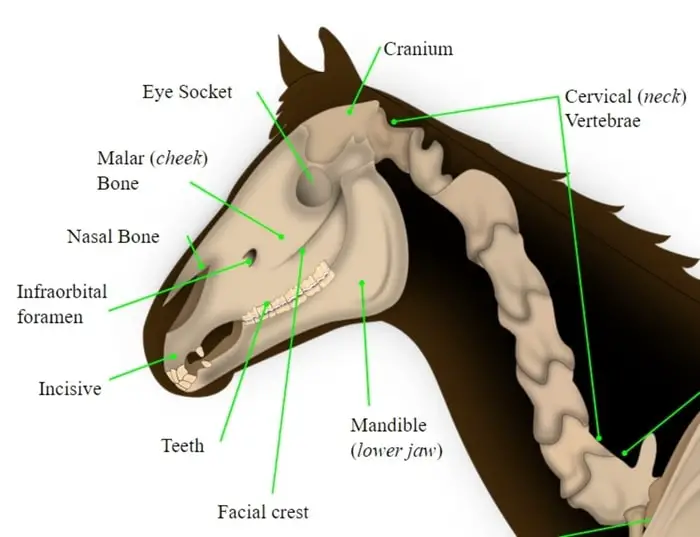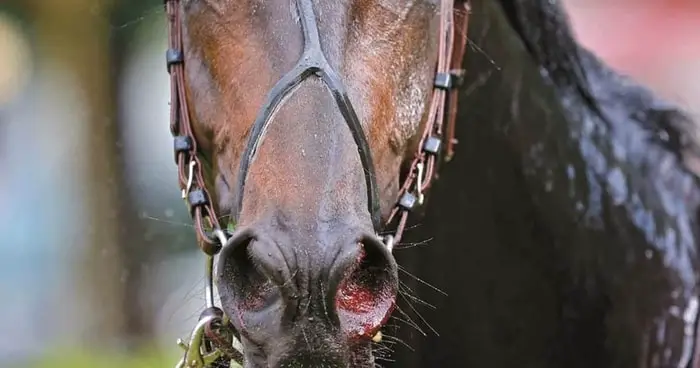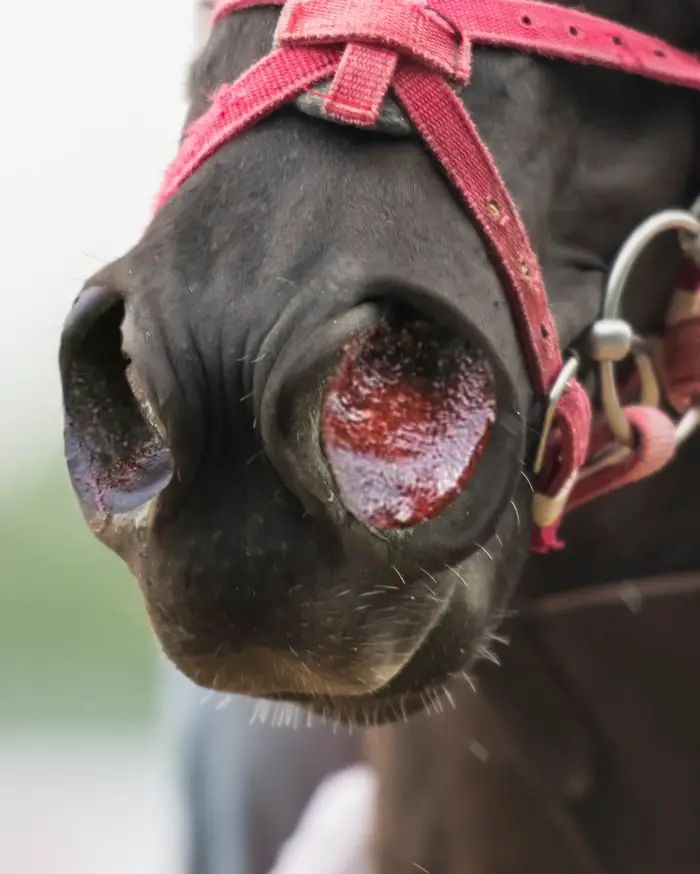Horse Nosebleeds are adequately known as epistaxis in horses, are often due to a blow on the head. A slight bleed from one nostril- less than enough to fill a teacup and stop within 15 minutes is unlikely to be serious, but do seek veterinary advice if it should happen again. If accompanied by coughing, a moderate nosebleed suggests that a foreign body is wedged in the nose or throat. Foreign bodies in nosebleed, or a copious nose bleed, is a true emergency, and you should be contacted your vet immediately, particularly if the horse is distressed.
Causes of Horse Nosebleed
The major causes of horse nosebleed are as follows:
- Trauma to the head.
- Sometimes tumors are present in the respiratory tract.
- Fungal infection or Guttural pouch mycosis.
- Blunt trauma to nose or head.
- Occasionally sinusitis can cause epistaxis in horses.
- Nasal Foreign bodies can cause injury to blood vessels.
- Damage to or abscesses can also result in blood at one or both nostrils.
- Exercise-induced pulmonary hemorrhage (EIPH).
- Iatrogenic causes.
- Ethmoidal hematomas.

Symptoms of Epistaxis of Horses
- Blood oozes from one or both of the nostrils.
- Blood in a trickle.
- Blood of a heavier flow.
Diagnosis of the Horse Nosebleed
The cause of a minor, one-off nosebleed may never be found, but with recurrent or persistent nosebleeds, your vet may suggest endoscopy. Your veterinarian performs an examination of the internal structures with a flexible instrument that enables them to see what is going on inside. X-ray pictures may also be required to detect skull damage.

Evaluation of Nose Bleed in Horses
You investigate a horse with a severe nosebleed properly; a referral may be required to an equine hospital with the facilities and expertise to operate if necessary. Some severe but rare equine conditions start as tiny nosebleeds, then worsen, particularly guttural pouch mycosis, so always promptly get a significant or recurrent nosebleed checked out. A hospital investigation does not necessarily mean that major surgery is required, however ultimately, it is the best place to go for a diagnosis and cure.

What To Do While Nosebleed in Your Horse
- The horse should be kept as safe as possible with any form of nosebleed.
- The nose should never be packed, as horses breathe through their noses, which would only worsen the situation.
- If the blood is coming from inside the nose area, it may help hold an ice pack or cold, wet towel below the horses’ eyes.
- Remember that horses are big animals, and their body contains a lot of blood, so what looks like a significant nosebleed may not be critical.
- Even so, a nosebleed should not continue for more than 15 minutes; if it does, consult your vet urgently.
- If possible, advise your vet whether the bleed is from one nostril, which means it is coming from inside the nose area, or from both nostrils, which suggests it originates somewhere further back.